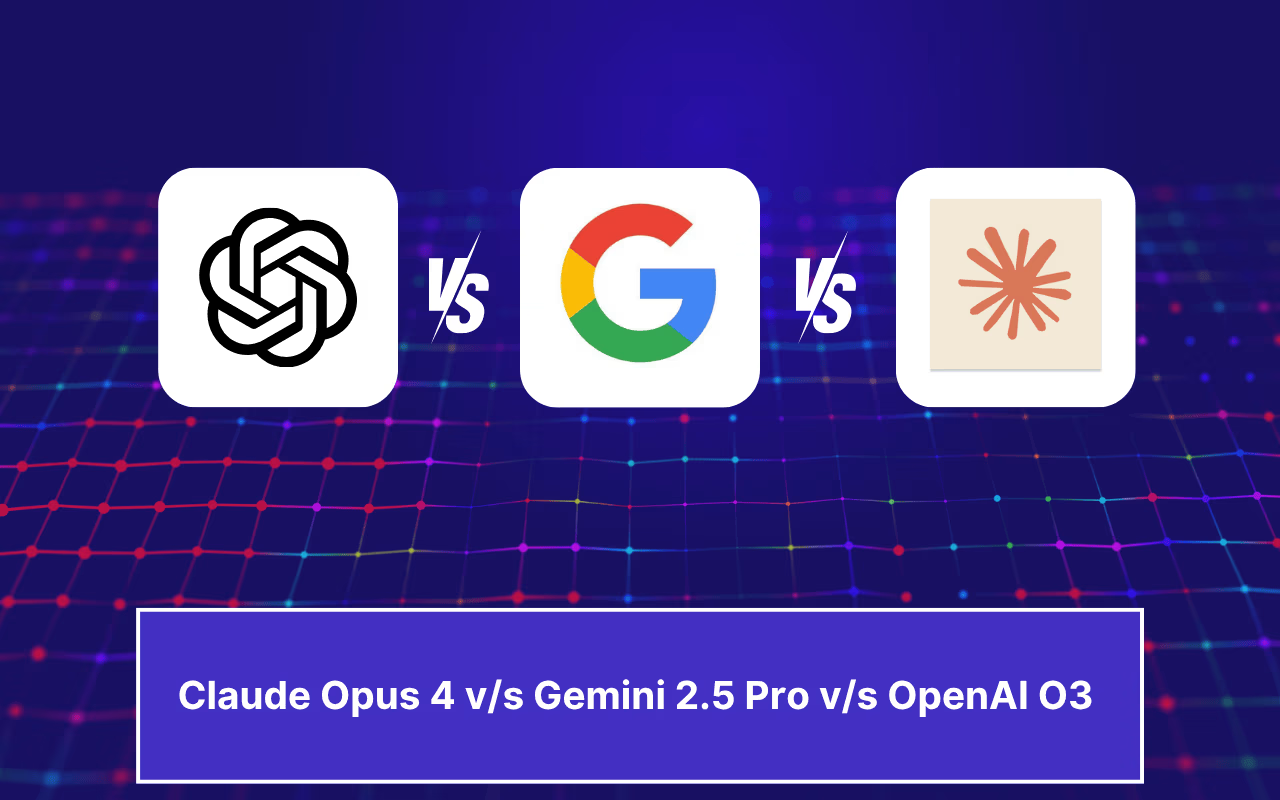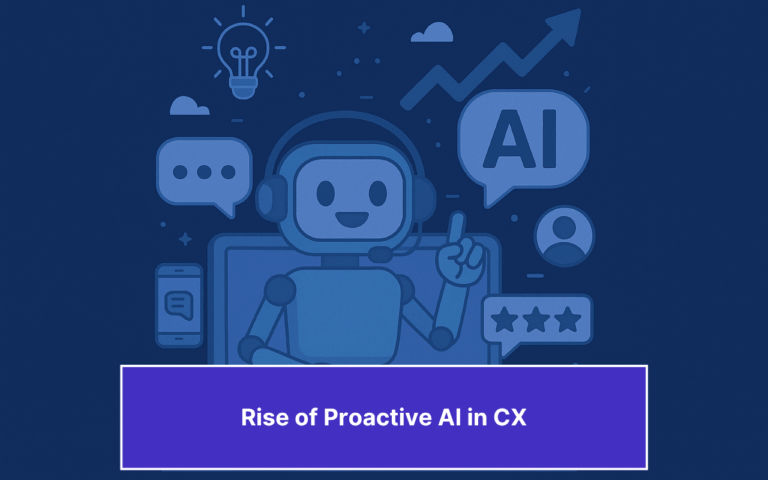Updated on May 1, 2025
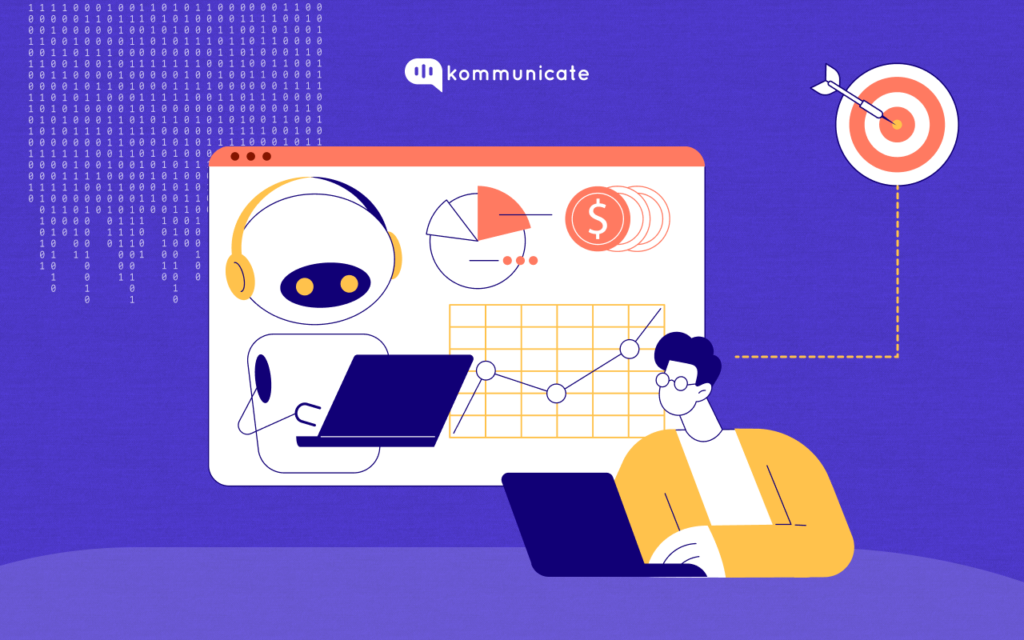
Since the launch of ChatGPT last year, Generative AI has heralded the dawn of a new era.
Some were skeptical that Generative AI would take their jobs, and, in some cases, it proved them right. But we here at Kommunicate are hopeful optimists.
We know that Generative AI is not an evil job-taking robot that will one day render me and you reading this unemployed. In fact, according to a report published by the MIT Sloan School, the use of generative AI has helped boost worker productivity by as much as 40%.
In this post, we are going to see a few practical applications of generative AI, in a wide array of businesses.
Key Generative AI Applications for Business
We have divided the entire post into 7 sections, denoting 7 spheres of the business where Generative AI is making an impact. Here are the top 7 generative AI practical applications in business :
- Generative design
- Material innovation
- Game design
- Content Personalization
- AI Chatbots for marketing and support
- Social media management
- Data Analytics
Let us take a deep dive into each of them.

1. Generative Design
One field of Generative AI that is making all the noise is generative design. Here, the AI generates a combination of design iterations based on predefined constraints and objectives. Generative AI can also speed up the prototyping phase by automating the 3D modeling process.
Take Volkswagen for example. The car company is using Generative AI to streamline the design process for a 3D component. This component finds its application in one of Volkswagen’s electric vehicles. Savings of time are not the only result of using Generative AI in this prototyping process. This process also optimizes the component’s performance.
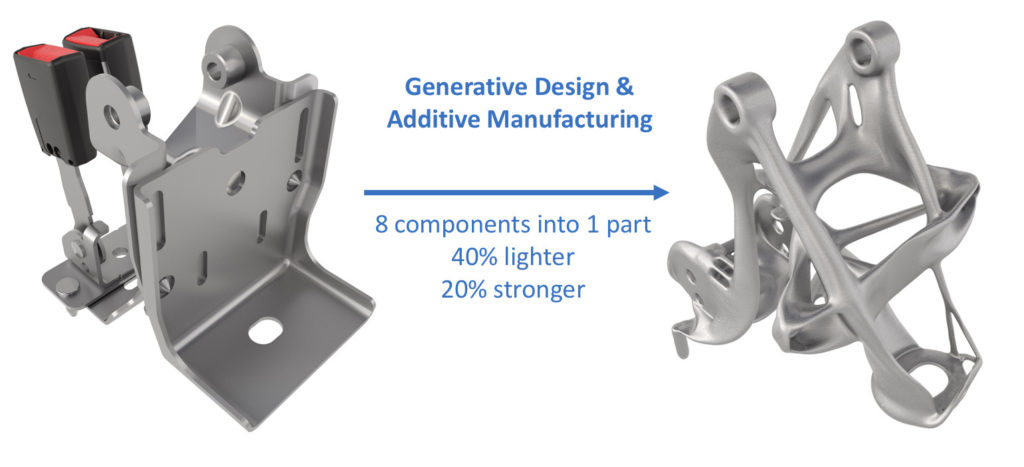
2. Material Innovation
Crafting new materials for a specific purpose was a time-consuming process, thanks to the countless hours spent in trial and error. Generative AI today is accelerating material discovery by pushing the limits of what is possible. One of the key areas where this is finding application is in the creation of high-performance lightweight alloys.
AI can analyze a vast dataset of existing materials, and predict how they will respond to different conditions. Researchers at Airbus, for instance, have been using Generative AI to design and create novel materials for aircraft components. They do so by analyzing material properties by feeding the AI data on existing alloys, desired wing properties, and flight conditions.
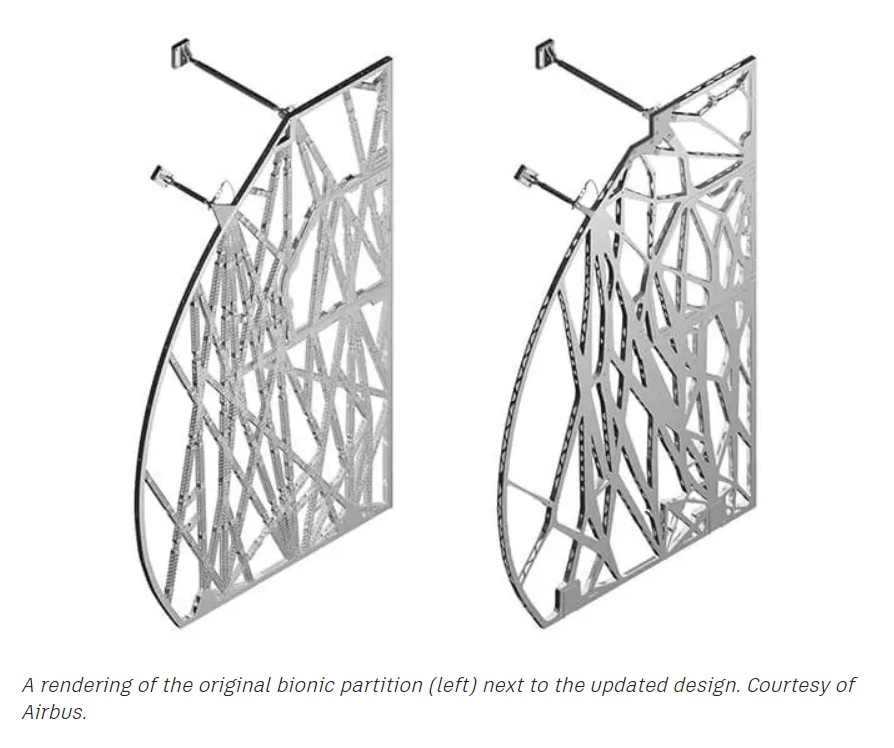
AI can now generate thousands of virtual alloy candidates, by testing them in simulated flight conditions. And this is just scratching the surface of what Generative AI can do.
3. Game Design
Generative AI also finds its application in 3D Game design, especially in creating virtual environments and landscapes, while also streamlining project management for game development by automating workflows and asset generation. Imagine creating breathtaking scenery, populating it with creatures from all over the galaxy, and generating dynamic weather and lighting, resulting in a truly immersive environment, all without the need for a human designer.

This is what Generative AI is capable of. Puzzles adapt to your playstyle, and enemies evolve according to your progress, resulting in fresh and unexpected gameplay experiences. AI can also generate soundtracks according to the surroundings, putting game development in the hands of the common man.
Nvidia’s GauGAN engine is one such application. Using deep learning techniques, GuaGAN turns simple sketches into ultra-realistic 3D models. It employs what is known as semantic segmentation, where it understands the different objects and elements that every stroke in the sketch represents.
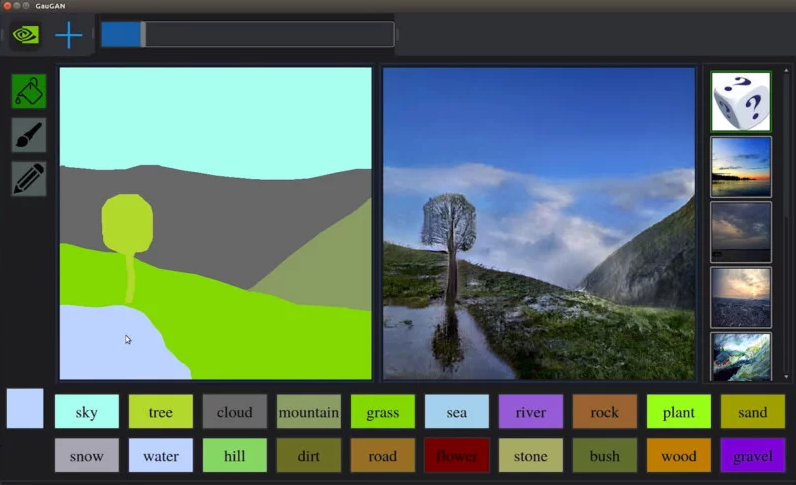
Image courtesy: nVIDIA
The generative model then takes this information and creates a photorealistic image that is in high resolution, based on the sketch. GuaGAN’s advanced capabilities lie in capturing intricate details, such as text, lighting, and perspective. GuaGAN will accelerate game development, and open up new avenues for creativity and experimentation in game design.
Generative AI also helps in Fashion design, Trend prediction, and Supply chain optimization and is quickly making inroads into fields such as Medical device design.
4. Personalization in Content
Some of the companies that are at the forefront of marketing innovation understand that personalization is the key to engaging customers with your brand. More and more companies are using Generative AI to create personalized marketing materials, including video scripts and eye-popping visuals and custom images with an AI image generator.
This personalization in content helps maximize engagement, and companies like Netflix and Spotify are using this approach to keep users hooked to their platforms. Netflix, for instance, has a vast variety of content that it wants its users to watch. It generates personalized thumbnails and video scripts that help keep its users hooked to the platform and discover these hidden gems.
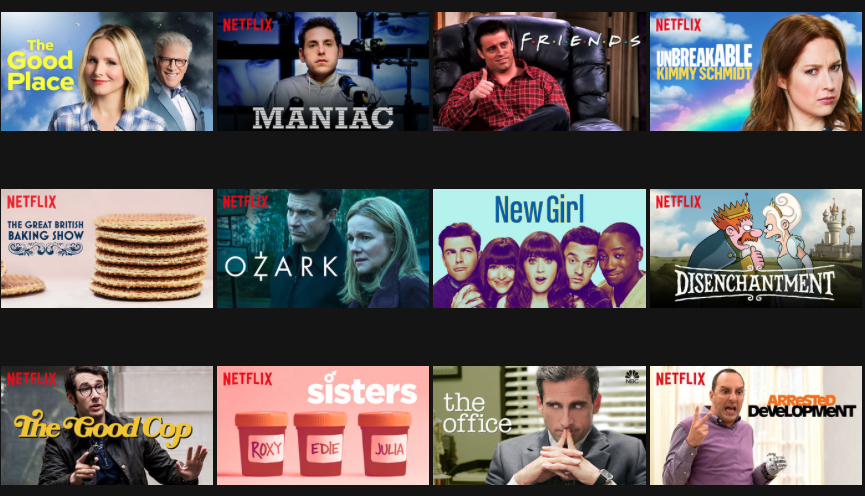
5. AI Chatbots For Marketing and Support
The era of cold, impersonal emails is over. No one likes getting those in their inbox. Static ads are dead too. What has come in their place are chatbots, and these chatbots, with generative AI backing them, help in conversational marketing.
Chatbots can proactively engage with your prospects or your customers, answering product questions, offering demos, and guiding them through the product journey. An important advantage of chatbots is that they provide answers to queries instantly, without having to wait or consult with, an outside expert.
AI-powered chatbots for marketing and support are multilingual, easily switching between languages and integrating with platforms such as social media and websites. This enables customer service email automation and customer support across a wider range of audiences, helping to improve efficiency and reach.
Chatbots can also help in lead generation by collecting user information and understanding their needs. The chatbots will then pass on this information to the sales teams, who will move the prospects down the sales funnel.

Chatbots with Generative AI powering them are thus powerful tools that marketing teams across the world can leverage to further their goals.
6. Social Media Management
Creating copy for social media is a tricky game, ask any copywriter. Not only do you need to include more with less (brevity), but you need to make sure that you don’t offend anyone (easier today than at any time in history).
AI can greatly aid here, creating captions, hashtags, and entire posts that you can schedule for different social media platforms. You don’t need to hire expensive photographers, videographers, or graphic designers to create high-quality, original content.
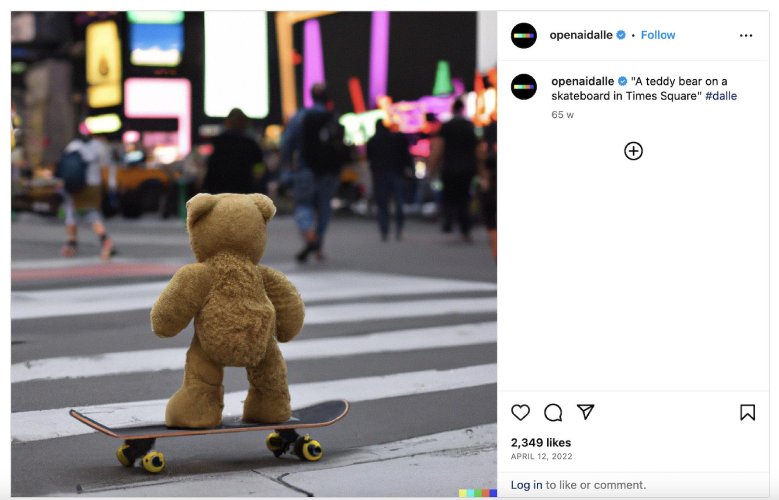
Image Source: OpenAI DALL E2
Traditional tools such as Photoshop, Canva, and even Social media platforms such as Instagram are implementing Generative AI to edit images and videos. Instagram recently introduced a Backdrop editor using which you can completely edit or remove background.
Generative AI is thus taking control of our social lives too, creating and disseminating content faster than ever before. It is a tool that is truly democratizing this field, which was previously controlled by large corporations with big marketing budgets.
7. Data analysis and Predictive Analytics
Large datasets are usually a nightmare to organizations both small and large, since they need to wrangle with it using numbers and expensive data scientists to make sense of it. Enter Generative AI.

Generative AI can analyze such large datasets in a small amount of time, and provide businesses with actionable insights. Just imagine the competitive advantage your company can have if it can predict disruptions in the supply chain before they happen. Or looking at customer’s purchase patterns and then stocking up your inventory based on this information?
This is exactly what Walmart is doing. Walmart uses Generative AI to analyze a huge amount of sales data, to predict future demand. It then optimizes inventory levels across all its stores, reducing the chances that one store will run out of stock.
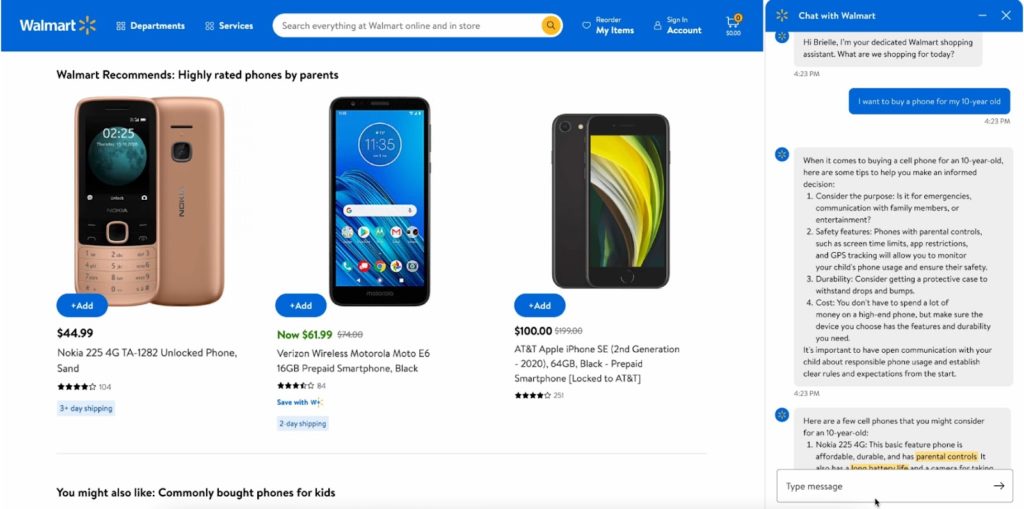
Also in the works is a shopping assistant, which Walmart showcased in a demo recently and which Walmart is introducing to shoppers in all the stages of the shopping journey. The new search assistant will use Generative AI and get the context of each of the previous interactions that the user has had with the bot. It will then generate a list of items that are related to that particular query.
For instance, if the bot were to answer a query from a customer for a Marvel-themed party, then the user would get a list of items such as paper napkins, balloons, and streamers of Marvel’s superheroes. This is just an example of AI in action, and the sky’s the limit here.
Conclusion
With each of the application areas that are mentioned above, there are limitless possibilities for how AI can improve. Generative AI will also find more and more practical ways to touch our lives in the coming days, and when it does, you will be sure to find out more about it on this page. Keep reading.
Naveen is an accomplished senior content writer with a flair for crafting compelling and engaging content. With over 8 years of experience in the field, he has honed his skills in creating high-quality content across various industries and platforms.


